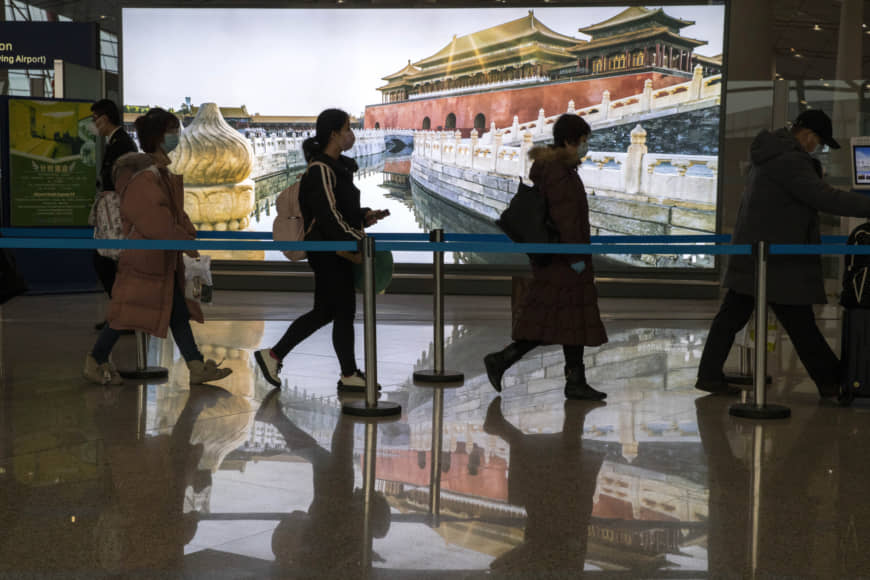Brave new world: the best-designed travel destinations for 2020
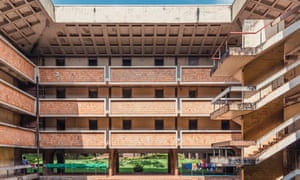
Kampala, Uganda: a tour of tropical modernism
Under a tree outside Uganda’s National Theatre sits architect Doreen Adengo, sheltering from the sun that beats down before heavy rain at this time of year. It’s here she begins her tours of African or “tropical” modernist buildings in Kampala’s central business district, aiming to increase awareness and appreciation of their architecture. She started last year, inspired by architect Manuel Herz’s book African Modernism – The Architecture of Independence, featuring buildings in Zambia, Senegal, Ivory Coast, Kenya and Ghana. Herz’s work explores the politics behind these buildings – mainly constructed in the 50s and 60s – from colonial projects to nation-building for proud new African leaders.
“The National Theatre fits with our equatorial climate,” says Adengo of the first stop on her tour. “The rings on the exterior stop the sun from going into the building directly, and it has double facades for ventilation.” This brise soleil is typical of Uganda’s modernist architecture: clever, free air conditioning. “Architects studied the sun path and wind patterns, and oriented buildings accordingly,” Adengo says.
But while the Europeans who carefully designed these buildings considered the climate, Adengo says this typically western theatre didn’t adapt to African culture: “In our theatre, there is no division between audience and performer.” This could be one reason why most Kampalans haven’t actually entered the theatre. “They come here to hang out, park cars, have meetings. There’s more activity outside than in,” she laughs.
In modern Uganda’s short history, buildings and spaces have been reappropriated again and again by the people – and their rulers. Another building on the tour, Kampala Serena International Conference Centre, was built in 1975 for Uganda’s infamous former president, Idi Amin. Now part of a luxury hotel, its basement was used as a torture chamber under Amin and President Milton Obote.
“There was this moment of optimism around independence,” Adengo says of the flagship buildings built for modern Uganda, such as the parliament and post office. Back then, the government had big budgets for such ventures, allowing for “grand, experimental and cutting-edge design in concrete”.
Today, architects in Kampala mostly work with private clients, who have a taste for flashy “Dubai glass”. Modernist buildings have suffered as a result: an ATM has been installed on top of a mural depicting the story of money and exchange at the front of Tropical Bank; the once brutalist beauty Cham Towers has been covered in gold aluminium panels. Adengo winces when she looks at them: “Architecture and preservation are not a top priority for Uganda.”
But she is passionate about protecting this architecture and is now working with the Uganda Museum – the country’s first modern building – on Keeping it Modern, a Getty Foundation project that aims to preserve modernist buildings around the world. She hopes to do the museum’s building justice, using concrete and other original materials in what will be the first conservation management of a modernist building in Uganda. Adengo hopes it will “pave the way for many more”.
To join Doreen Adengo’s African Modernism tour of Kampala, email [email protected]
Marrakech, Morroco: where the ancient meets the modern

The beauty of Marrakech’s buildings can be elusive. You might glimpse a tiled courtyard or panels of delicate fretwork, but then a door swings shut or you turn a corner. The city’s riads were designed to keep the best decoration on the inside.
Luckily, there are more accessible examples of the city’s architecture, ranging from 19th-century palaces to the ultra contemporary. For palatial Islamic style, head to Palais Bahia and Dar Si Said. There is perfection in the small details – the geometric tiling and carved ceilings – but step back and a calmer overall symmetry reveals itself.
Vestiges of Morocco’s colonial past live on in the city’s Ville Nouvelle and Gueliz areas. This is where you will find the 30s Grande Cafe de la Poste, with its checkerboard tiles, elegant staircases and lazily turning fans. The building was revived in 2006 by Parisian architects Studio KO, who have a base in the city and are better known for designing the nearby Musée Yves Saint Laurent. Its silhouette of intersecting arcs and sharper angles was inspired by drawings in the fashion designer’s archives, and exterior brickwork is arranged to resemble the warp and weft of fabric. Interior surfaces are softer and smoother, designed to evoke the lining of a couture jacket.
Saint Laurent’s legacy also includes the neighbouring Jardin Majorelle, bought by the designer and his partner Pierre Bergé in 1980 to save it from hotel developers. This exotic garden was created by French artist Jacques Majorelle in the 20s, but the luminous cobalt he chose for the walls (later adding it to the fountain, path borders and even plant pots) almost eclipses the greenery. His studio, designed by architect Paul Sinoir, brings together art deco curves, Moorish pillars and cubist inspired overhangs. It now houses a museum of Berber culture, but the longest queues are to take selfies against its “Majorelle blue” walls. Visit the gardens first thing to avoid the Insta crush.
The city has a raft of restored riads that function as hotels, varying in authenticity. One of the first was El Fenn and its use of traditional tadelakt (waterproof plaster) and saturated colours is still inspiring. Visit by booking lunch or dinner – then take in the style while you dine.
Los Angeles, US: new frontier town for design
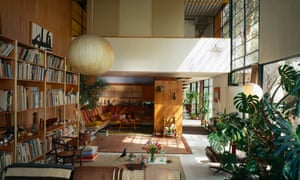
Los Angeles has never quite achieved the cultural kudos of New York or San Francisco, but with tech startups priced out of northern California and LA offering low-cost spaces for artists and designers, it has become a frontier town for new ideas in work, wellness and creativity.
Landmark buildings are reopening with new purpose – workspace hub NeueHouse has moved into Downtown’s Bradbury Building (built in 1893), a 1927 fire station has become the Arts District Firehouse hotel and a Beverly Hills villa once owned by Elvis Presley is now Casa Perfect, the California outpost of New York gallery The Future Perfect.
“The design scene here is a lot less saturated than it is in New York,” says Tom Parker, co-founder of London’s Fettle Design, which has an LA office. Fettle recently completed restaurant Olivetta on Melrose Avenue. “There is more space to find a niche for yourself as there are no big design agencies here and the European aesthetic blends well with California’s laid-back, beachy style.”
West Hollywood in particular is turning into a pedestrian-friendly design centre, home to talent such as textile artists Block Shop and ceramicists Bari Ziperstein and Ben Medansky. After the hugely successful launch of Frieze LA last year at Hollywood’s Paramount Studios, this year’s fair has expanded to include Focus LA, a selection of emerging LA galleries including Various Small Fires and as-is.la. A number of new hotels have opened to house the art crowd, including the 1 Hotel and Ian Schrager’s latest Edition.
And while you’re there, check out the LA masterpieces by some of architecture’s biggest names. Many of the city’s unique properties can be toured for a few dollars if you book in advance, such as Case Study House 22 (better known as the Stahl House), the Eames house, Watts Tower and Frank Lloyd Wright’s Hollyhock House.
Brussels, Belgium: take a ride through outdoor art
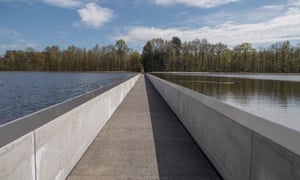
“Belgium is full of great design talents, yet it doesn’t show off about it,” says Liv Vaisberg. She should know. Vaisberg is co-founder of Brussels’ Collectible design fair, heading into its third year this March. Alongside international galleries, Collectible has a showcase for new names. “The fair acts as a platform for designers, mostly emerging or with no gallery representation, who have the chance to take centre stage and present their own work to potential clients,” says fellow co-founder Clélie Debehault. As major Belgain institutions the Design Museum Ghent, CID Grand-Horn and Z33 also exhibit, Collectible is a snapshot of Belgium’s design scene from the grassroots up.
Don’t neglect Belgium’s art scene while you’re there. 2020 is the year of Van Eyck and Ghent’s Museum of Fine Art is holding a major exhibition to celebrate, reuniting more than half the world’s remaining Van Eyck works. While in Antwerp, visit interior designer Axel Vervoordt’s Kanaal cultural complex just outside the city. The converted distillery is a remarkable space, including flats by Vervoordt, as well as galleries and installation spaces that anyone can view by appointment. Featured works include Anish Kapoor’s At the Edge of the World (1998) and James Turrell’s Red Shift (1995), as well as pieces by Marina Abramovic and Takis.
And if you are in Antwerp, it is just a one-hour drive to Limburg to experience a completely different sort of design: bicycle trails. A series of cycle tracks opened last year that lets you cycle through the trees, as well as at eye-level through a pond. A final track arrives this year where you can cycle underground. There are now more than 2,000km of trails throughout the province of Limburg, including a ride that takes you past outdoor artworks curated by major Belgian gallery Z33.
Tbilisi, Georgia: welcome to the new Berlin

When Lisa Offermann moved from Berlin to Tbilisi to open an art gallery in 2018, some of her friends and colleagues thought she was mad. “They were like: ‘Why? What? Where is Tbilisi?’” But Offermann, who had been working with Georgian artists for several years, had fallen in love with the city’s energy and sense of untapped potential.
The Georgian capital’s burgeoning art, fashion and underground clubbing scene has earned it the nickname “the new Berlin”. But that only tells half the story, says Offermann. At the crux of Europe and Asia, and emerging from decades of Soviet occupation, the capital of Georgia has a style all of its own. “The scene here is really interesting,” says Offermann. “There’s a real sense of creativity and something exciting happening. Just to get basic art supplies is a challenge, so the artists work with whatever materials and colours they can find and that brings surprises with it.”
This same resourcefulness also applies to venues. The lack of purpose-built cultural spaces has resulted in a certain ingenuity, with art cafes opening in crumbling art nouveau houses, pop-up galleries in Soviet-era factories and nightclubs taking over abandoned spaces – the city’s most famous techno club, Bassiani, can be found beneath the Dinamo football stadium. Similarly, Project ArtBeat, which has been instrumental in promoting Georgian contemporary artists, began life as a mobile gallery travelling the country in a shipping container before finding a permanent home in the old town.
Offermann’s gallery, LC Queisser, is next door to Fabrika, a former textile factory that is now home to a hip hostel, artist studios, shops, bars and a courtyard that hosts regular cultural events.
Another Soviet-era factory – a former printing press – has been drafted into service as Tbilisi’s newest design hotel, The Stamba, where the exposed concrete of the brutalist structure is offset by abundant foliage, floor-to-ceiling bookshelves and exquisite pieces of contemporary Georgian design. The hotel is also home to the Tbilisi Photo and Multimedia Museum and gives space to artist studios.
Along with its sister property, the equally stylish Rooms Hotel, the Stamba played host to several events during the most recent Tbilisi fashion week, an event that is credited with changing perceptions of the city. This May will also see the return of the Tbilisi Art Fair for its third year, and it is hoped that the growing popularity of this event will give a similar boost to the visual arts.
“The art fair is a really great time to visit Tbilisi as everything is open, there is lots happening and you’ll see the city at its best,” says Offermann. “For so long the city was closed to the world, but visitor numbers are growing and there is real potential to make this into a centre for design and art.”
Glasgow, Scotland: DIY and the spirit of innovation
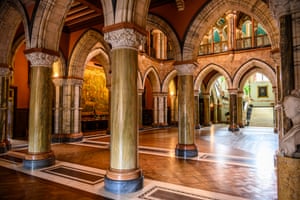
Scotland’s biggest art draw this spring is the Glasgow International Festival. Not only can visitors view exciting new work at top museums and galleries – including sculpture by Eva Rothschild at The Modern Institute and a large-scale commission by Turner prize-winner Duncan Campbell at Kelvin Hall that incorporates electromagnetics and animation – but across the city, artists are also putting on events at the unlikeliest of venues. A repurposed waiting room at the Queen’s Park Railway Club will house artist Graham Fagen’s solo show inspired by an archive of notes, letters, name tags and invitations that all spell his name wrong; and Glasgow Women’s Library will host a programme of talks about lesbian history and culture in the UK.
“There’s a real do-it-yourself attitude among artists in Glasgow which is typified during the festival at The Old Hairdresser’s bar,” says Andrew Hamilton, co-director of The Modern Institute. “It always hosts amazing performances and gigs and ends up becoming an unofficial hub. It’s these kinds of spaces that really make things interesting here.” He cites the artist-led Celine, the contemporary David Dale and the commercial Koppe Astner galleries as other venues worth visiting – at any time of year. “At all of these places, artists don’t have to be 10 years into a career to have a show.”
For architecture fans, Charles Rennie Mackintosh’s connection to the city can be seen through places such as Mackintosh House, set within the Hunterian Art Gallery, where the original fixtures, furniture and key interiors from his home have been re-assembled.
While there, take the ferry ride to the Isle of Bute and the neo-gothic mansion Mount Stuart. It’s full of design innovations (the world’s first domestic heated swimming pool, an early telephone system) and has a contemporary visual arts programme featuring, until the end of February, an outdoor commission by Scottish sculptor Martin Boyce, inspired by a dismantled tennis court. “The city has such a rich art scene; there’s a sense that everyone is contributing to something bigger,” says Glasgow International director Richard Parry. “Artists in Scotland really get on with it and create work on their own terms.”
Glasgow International runs from 24 April to 10 May
Tokyo, Japan: an immersive exchange of culture
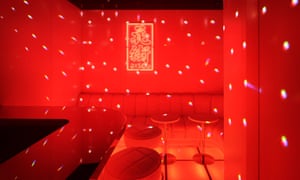
From Michelin-star restaurants tucked down alleyways to basement karaoke bars, so much of life in Japan happens behind closed doors – which is where airKitchen comes in. The idea is to connect home cooks with travelling foodies who can book cooking classes run by locals across Japan. Once you have whipped up ramen noodles or a trio of traditional desserts, say, you tuck into your efforts with the host.
This notion of encouraging visitors to feel part of the country is also evident at Trunk(Hotel), which opened in Tokyo’s Shibuya neighbourhood in 2017. “We wanted guests to immerse themselves in our culture,” says Hiroe Tanaka, creative director of the Trunk Atelier. “The social spaces encourage a sense of community; we use them as a platform for local talent through programming DJs and other events.”
Last year, the company opened a second, very different venture: Trunk(House), a one-bedroom micro-hotel (sleeps four) in a former geisha house in the Kagurazaka district known as Little Kyoto. “Just as creatives in the past would use the salons in this neighbourhood as places of cultural exchange, we hope that Trunk(House) will leave guests inspired,” says Tanaka, who worked alongside studio Tripster on the interiors that combine pared-back style with contemporary design: tea sets by Tom Sachs, furniture by Stephen Kenn and lighting by Jean Prouve. “Our commissions followed the rough brief of Tokyo-ness; the result is a collection of art that embodies the essence of the city.”
The two-year-old Yayoi Kusama Museum is only a 20-minute stroll away and you can visit the Kume Sekkei-designed building dedicated to the avant-garde Japanese artist. Also pop into the Ghibli Museum, which celebrates the work of award-winning animation director Hayao Miyzaki and Studio Ghibli. Currently you can see an exhibition of Miyzaki’s original plans and drawings for the foundation of the museum. And make sure you see a Ghibli film in the Saturn theatre in the museum’s basement. This month’s film is A Sumo Wrestler’s Tail.
Zurich, Switzerland: cutting-edge and cool precision
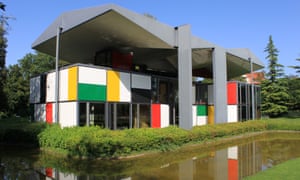
The birthplace of dadaism and the Helvetica typeface, Zurich is no stranger to innovative art and design. In the early 20th century, the Old Town (Altstadt) and its infamous Cabaret Voltaire nightclub were at the heart of the Swiss avant-garde movement. A century later, the neighbourhood has rediscovered its creative mojo with a flurry of new gallery openings and an attention-grabbing new extension to the Kunsthaus art museum on Heimplatz. Designed by David Chipperfield Architects, it won’t open until Februry 2021, but is already creating a buzz with talk of a new “art quarter” for the city and new galleries vying for prime spots on the narrow medieval lanes around the museum.
“In the 20th century, the Old Town was a gathering place for artists and writers and I think there is now a revival going on,” says Fabian Lang, who returned home to Zurich last year to open his own gallery after eight years working in London and Venice. In the past two years, he estimates that at least eight new galleries have opened in the immediate area, including big names such as Lévy Gorvy and Galerie Eva Presenhuber .
“Zurich has changed in the 10 years since I went away,” says Lang. “There is a sense of it opening up and becoming more international. It’s still a small city but now it has more of a big-city feel.”
Nowhere is this more apparent than in Zurich-West, the once-gritty, now-gentrified industrial neighbourhood that became the city’s epicentre of cool in the mid-1990s when the old Löwenbräu brewery was transformed into a huge cultural space. Big-name galleries such as Peter Kilchmann and Hauser & Wirth https://www.hauserwirth.com quickly followed and the area is now home to the Migros Museum of Contemporary Art, as well as countless cool bars and retail outlets, such as the 26-metre Freitag Tower , which is made from stacked freight containers and where you can shop for bags made from recycled lorry tarpaulin and seatbelts.
For a crash course in Swiss design, from Swatch watches to Toblerone boxes, the Museum für Gestaltung, in a restored modernist building on Ausstellungsstrasse, is a must-visit. Last spring, the museum reopened the Pavilion Le Corbusier on the shores of Lake Zurich after extensive renovations. The glass and steel building was the final project by the celebrated architect before his death. He called it his Gesamtkunstwerk – “total work of art” – designing everything from the angular free-floating roof to the door handles. Combining Swiss precision with boundary-pushing design, it is the perfect landmark for Zurich.
[“source=”]theguardian

